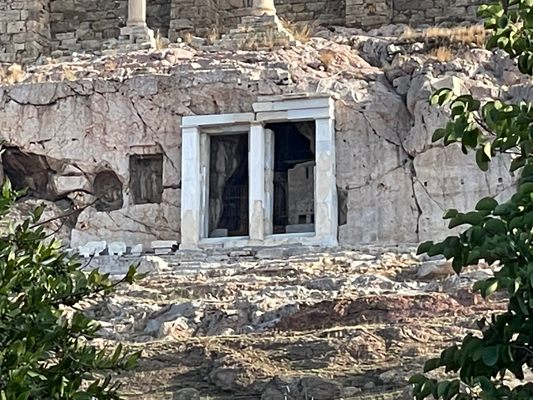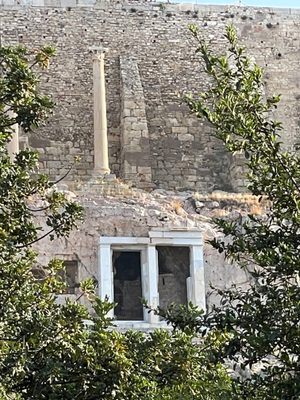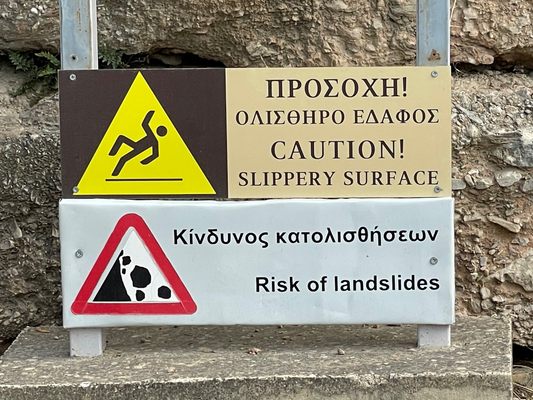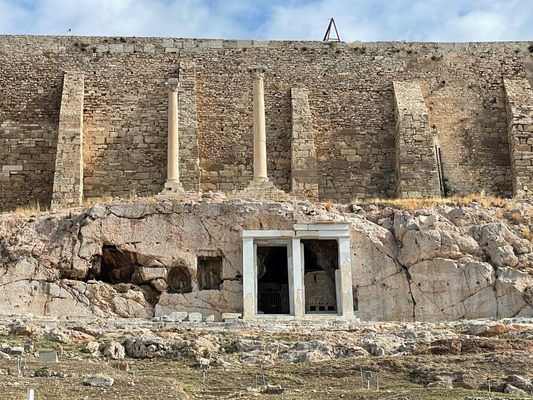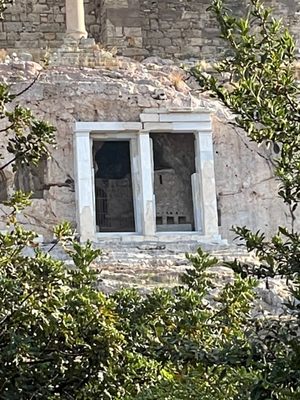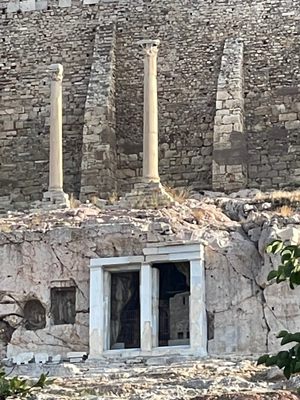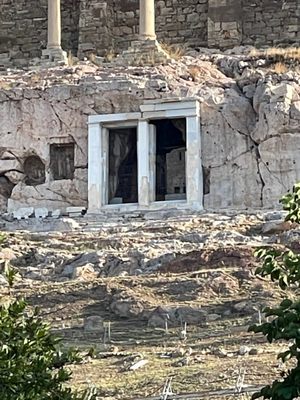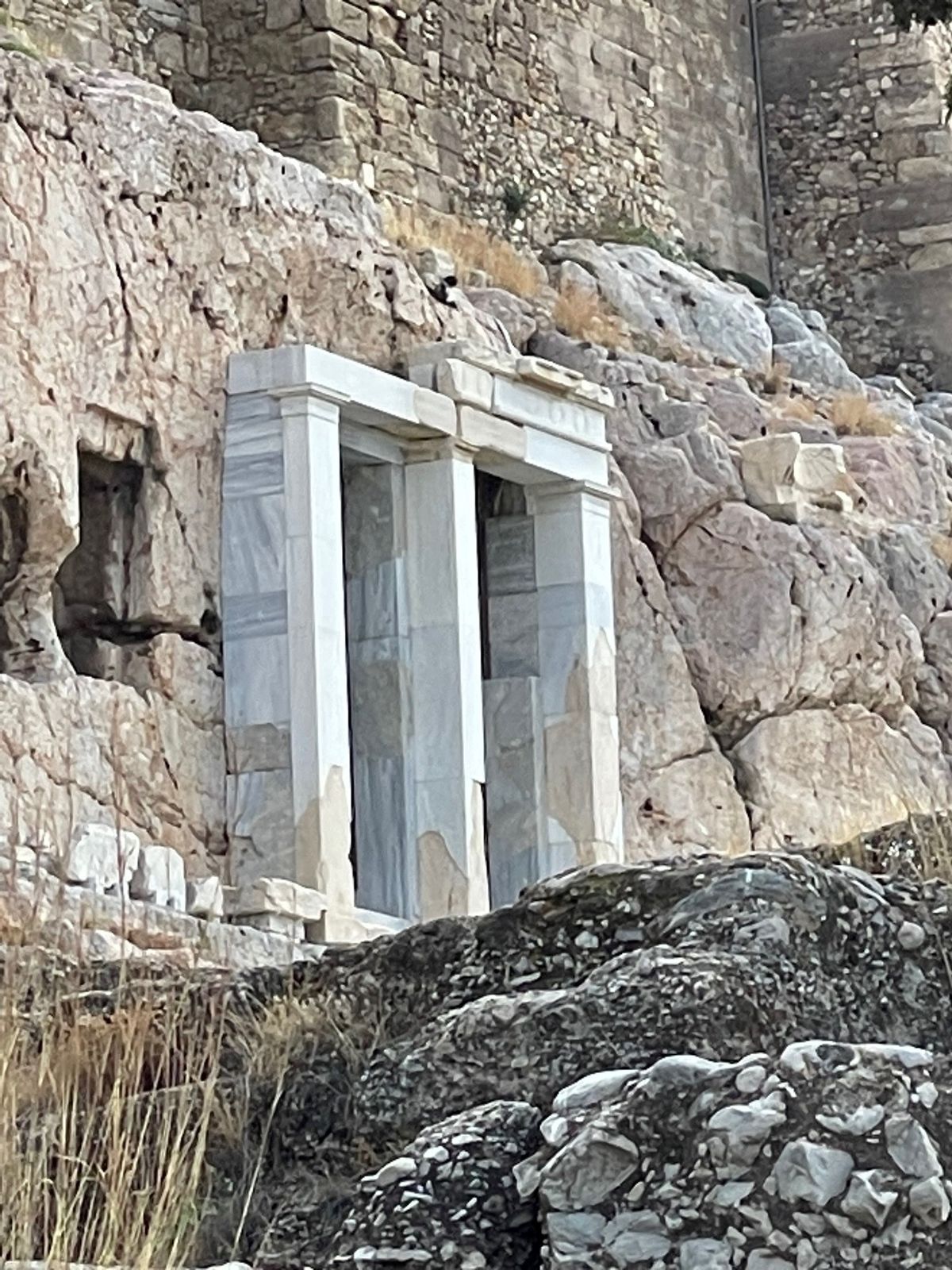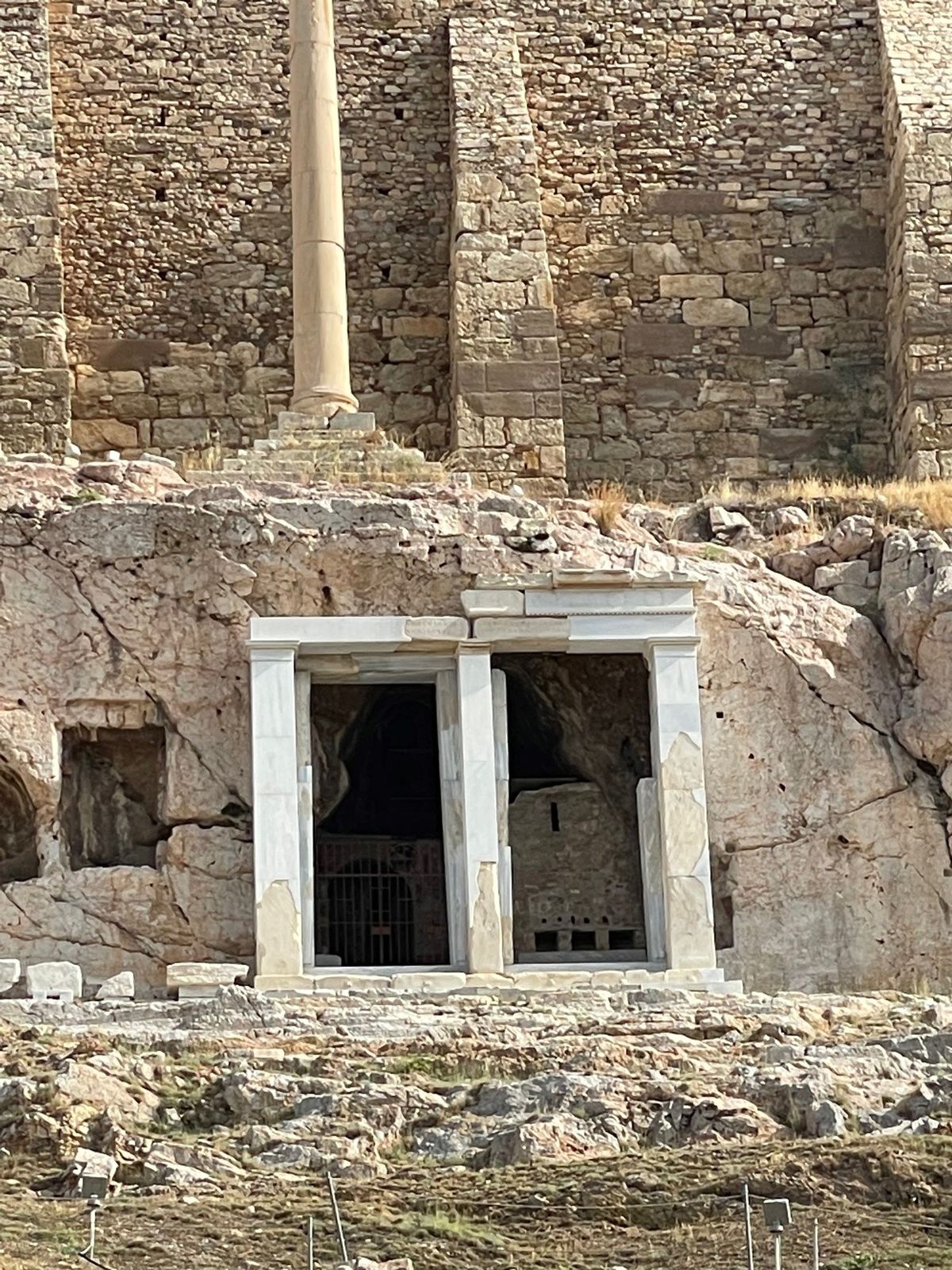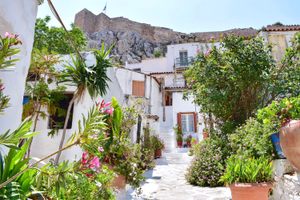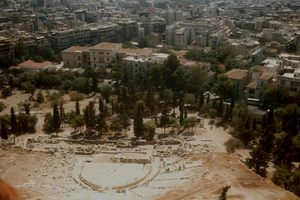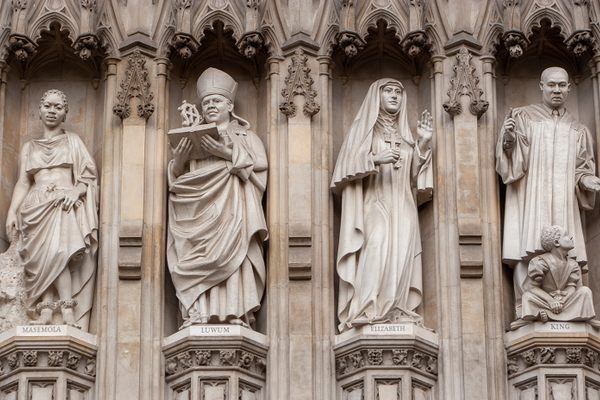About
In ancient Greece, yearly theater competitions sponsored by chorēgia, wealthy patrons of the dramatic arts, were held in the Theater of Dionysus. The chorēgia, literally "the leader of the chorus," who sponsored the winning performance received a large winning trophy. In 320 BC, Thrasyllos earned the first-place prize for “Tribe of Hippothontis” and commissioned a monument for his large bronze tripod trophy. He was given the unusual privilege of locating this monument halfway up the south slope of the Acropolis in Athens.
The monument was built with a variety of marbles from local quarries to form a small temple the filled the opening of a natural, large cave. The façade was built as a close replica of the west facade of the south wing of the Propylaea on the Acropolis, with two monumental doorways with a central pillar, door frames, architrave, frieze, and cornice. The bronze trophy would've likely been fixed to the lap of a seated statue. Likely during the repair of the Theatre of Dionysus in the fourth century, a marble statue of Dionysus was placed inside the monument.
During the Byzantine period, a small church was created inside the cave and dedicated to the Panagia Spiliotissa, Virgin Mary of the Cave. The interior wall paintings include a mural of Panagia Spiliotissa, which archaeologist Constantine Boletis calls "the best surviving examples of post-Byzantine hagiography in the area of the Acropolis and its slopes." The walls also contain a mural of St. John the Evangelist and a large rendering of Abraham with three angels. In the rear is a large marble icon depicting the Dormition of the Mother of God, when Mary was taken to Heaven after "falling asleep."
The monument had significantly deteriorated by the 1700s, and in 1802 Lord Elgin took the statue of Dionysus (as part of the “Elgin Marbles”) and moved it to the British Museum in London, England. The monument was further damaged by the Ottomans in 1827 during the Second Siege of the Acropolis during the Greek War of Independence.
After Greek independence was secured, the Archaeological Society of Athens planned to restore the monument, however prior to the start of the project a large portion of the ruins were taken and used as building materials for the restoration of the nearby Byzantine-era Church of Panagia Sotira Lykodimou.
In 2002, the Committee of the Acropolis South Slope and the Ephorate of Antiquities of Athens planned to begin restoration work again at the site, but funding challenges kept the project from moving forward. However, in 2011, work resumed with assistance from the National Archaeological Museum.
The exterior site today consists of columns and fragments of the monument. The interior is well preserved, with steps being taken to protect the paintings from water seeping in through the cave. As of 2023, the Choragic Monument's restoration is still a work in progress.
Related Tags
Know Before You Go
The Choragic Monument of Thrasyllus is located on the south slope of the Acropolis, which requires a ticket to enter. Access to the monument is restricted and must be viewed from behind the protective ropes. The monument is viewable from many free areas to the south, including the pedestrian promenade on Dionysiou Areopagitou Street, the upper levels of the Acropolis Museum, and the many rooftop bars and restaurants in the area.
Published
July 26, 2023
Sources
- https://www.archaeology.wiki/blog/2018/01/12/double-secret%E2%80%B3-acropolis/
- http://odysseus.culture.gr/h/2/eh251.jsp?obj_id=19820
- https://www.classicist.org/articles/classical-comments-the-choragic-monument-of-thrasyllus/#_edn1
- http://www.my-favourite-planet.de/english/europe/greece/attica/athens/acropolis/acropolis-photos-01-035.html
